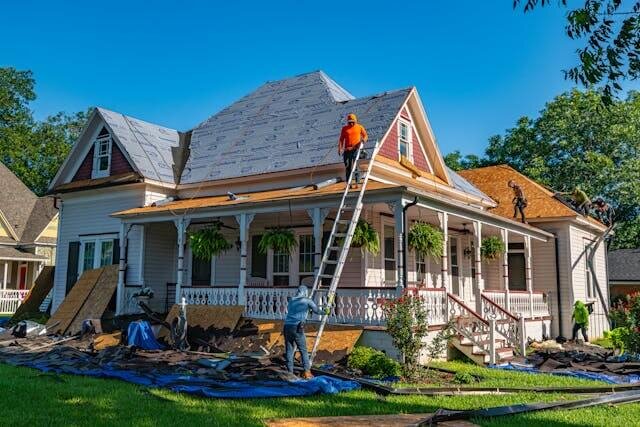
Some homeowners face a tough choice when they need to sell quickly or lack the budget to make improvements. For these sellers, selling your house as-is can seem like the simplest solution. This approach means you market the home exactly as it stands,
without committing to repairs or upgrades. Buyers see the property with all its flaws and features, and they agree to take it as-is at closing.
Peace of Mind During the Process
Life changes often demand quick decisions. Some sellers choose this option for a simple reason: moving for peace of mind. The burden of preparing a home for the market can feel overwhelming. Painting, fixing leaks, or replacing outdated fixtures can take weeks or even months. An as-is sale frees you from these tasks. You can focus on the move, your next chapter, or even a major life event. Whether you are relocating for work or handling family matters, cutting out repair projects can relieve significant stress. That is a major advantage for those who want to minimize disruption.
Clear the Clutter Before You List
Selling as-is does not mean ignoring presentation. One of the smartest steps before listing is to spend some time decluttering your home. While buyers know the house may need work, a clean, organized space helps them see potential rather than problems. Therefore, remove personal items, extra furniture, and anything that makes rooms feel cramped. A clutter-free home feels more spacious and inviting, even without renovations. It also helps buyers imagine themselves in the space, which can lead to stronger offers despite visible flaws.
Selling Your House As-Is: Saving Time and Effort
One of the biggest advantages is speed. Standard sales often involve weeks of painting, repairing, and staging. Those steps take time, money, and energy. Selling as- is cuts out this entire stage. The property can hit the market almost immediately after you decide to sell.
That is helpful if you are under pressure to move. Job relocations, family obligations, or financial needs often leave little room for lengthy preparation. The reduced timeline can mean closing faster and getting funds sooner, which is especially useful if you are buying another property or managing debt.

Reaching a Specific Buyer Market
While some buyers avoid properties that need work, others look for them specifically. Investors, flippers, and bargain hunters often seek homes that are priced below market because they require updates. These buyers know how to assess a property’s value
and factor repairs into their offers.
By setting a realistic price and advertising clearly, you can capture this audience’s interest. They may even prefer homes sold as-is because there is less competition. Knowing your target market helps. The key is to present your home honestly, with photos and descriptions that highlight both strengths and weaknesses.
Limited Negotiations and Fewer Demands
One stress point in traditional home sales is the long list of buyer requests after inspections. When you sell as-is, expectations are clear. Buyers understand they cannot ask for repairs or replacements after signing the contract. This upfront clarity can shorten negotiations. While price discussions still happen, there is less back-and-forth about small issues. It gives you more control over your time and reduces surprises late in the process. That is particularly appealing to sellers who value efficiency and want to avoid conflicts over details.
Costs That May Catch You Off Guard
While this method can save money, it does not eliminate all expenses. Sellers must still handle fees, legal requirements, and possible surprises. There can be unexpected expenses such as unpaid taxes, title problems, or buyer credits for serious defects
discovered during inspections.
These issues can reduce your final payout. It’s wise to budget for these possibilities, even if you plan to sell as-is. Working with a trusted real estate professional or attorney can help you understand potential costs and avoid unpleasant surprises.
Less Control Over Final Price
Selling without improvements often means accepting a lower price. Buyers tend to assume more risk with an as-is purchase, so they expect a discount. While skipping repairs saves money, those savings can be offset by lower offers. Market conditions also matter. In a competitive market, even as-is homes can attract multiple offers. In slower markets, the discount could be significant. Setting realistic expectations will help you avoid disappointment and make informed pricing decisions.
Inherited Properties and Quick Decisions
Sometimes, an as-is sale is the most practical choice. Families often face this when they inherit a property that needs attention. If you live far away or do not have the funds to renovate, selling your inherited house can be the simplest option. This route allows you to settle estate matters quickly. It can also reduce stress during an emotional time. The sale provides funds to divide among heirs or cover taxes, all without investing in repairs. For many, this is the best way to turn an unused property into something useful.

Risks of Limited Interest
Some buyers are cautious about homes listed as-is. They may wonder about hidden problems or high repair costs. That can reduce the number of showings and extend the time on the market. However, good marketing can help overcome this. Use professional photos, clear
descriptions, and honest disclosure. Highlight strong features like a good location or a large lot. Buyers appreciate transparency and can often look past cosmetic issues if they trust the seller.
Knowing When It’s the Right Choice
There is no single answer for everyone. The decision depends on your priorities. If you need cash quickly, have limited time, or do not want the stress of repairs, selling as-is makes sense. If you wish to maximize value and can invest in updates, a traditional sale may yield more profit. Be honest about your goals and resources. Talk with professionals who know your market. The best choice is the one that aligns with your timeline, finances, and stress level.
Is Selling As-Is the Right Move?
When thinking about selling your house as-is, weigh convenience against the potential drop in value. This method can be a lifeline when speed and simplicity matter most. It reduces stress and cuts preparation, but it can also lower your returns. The key is planning. Know your numbers, present the property honestly, and understand who your likely buyers are. With realistic expectations, selling as-is can help you move forward with confidence and turn a property into cash without unnecessary strain.
